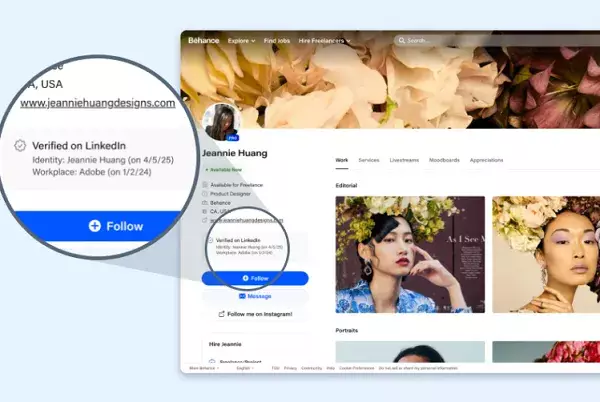In the fast-evolving digital marketplace, establishing authentic connections is paramount. LinkedIn, recognizing the necessity of a trustworthy professional environment, has taken a bold step forward by expanding its ID verification services. Initially rolled out in 2023, this initiative allows users to confirm their identities through reputable third-party platforms, culminating in a visual confirmation—a tick that signifies genuine profiles. This feature is pivotal in a landscape where professional relationships are often built on trust and credibility.
The introduction of ID verification marks a significant progression for LinkedIn, moving beyond the superficial endorsement checks seen on many social media platforms. Unlike the celebrity verification systems that populate mainstream sites, LinkedIn focuses on user authenticity, allowing an inclusive verification process for all its members. By harnessing local ID verification providers from various regions, LinkedIn has effectively paved the way for a more personalized and trustworthy user experience.
Strategic Partnerships and Innovation
LinkedIn’s decision to allow third-party platforms to integrate its ID verification markers is a game-changer for professional networking. A prominent example lies in Adobe’s recent incorporation of LinkedIn’s verification into its offerings, such as the Content Authenticity app and the Behance portfolio platform. By embedding this functionality, creators verified by LinkedIn can now showcase a “Verified on LinkedIn” badge, distinguishing their legitimacy within the Adobe ecosystem. This partnership eliminates the need for Adobe to develop its separate verification infrastructure, exemplifying a collaborative effort to enhance user trust across platforms.
Such integrations don’t just serve LinkedIn or Adobe; they amplify the concept of universal verification. This collaborative model could inspire other platforms to adopt similar verification processes, creating a cohesive approach to professional identity online. The implications of such developments reach far beyond mere badges; they represent a shift in how we conceptualize verification across the digital landscape.
Combatting Digital Deception
As more profiles gain verified status, LinkedIn aims to create a robust defense against the prevalent issues of spam, bot exploitation, and impersonation that plague digital interaction today. The rise of malicious activities online has led many users to advocate for higher standards of verification across all social media platforms. LinkedIn’s initiative stands as a potential blueprint for achieving universal verification, urging regulators to consider integrating similar practices into broader legislative frameworks.
One of the most compelling aspects of this initiative is the focus on the professional user base of LinkedIn. Users are more likely to pursue verification not just to prove their identity but to enhance their professional credibility. In a realm where one’s next career opportunity may hinge on a fleeting digital interaction, this extra layer of security can significantly impact professional networking and engagement.
Challenges of Anonymity and Regulation
Nonetheless, the discourse surrounding identity verification is not without contention. Many users value the anonymity that certain social media platforms afford, often fearing that stringent verification processes might deter open discourse. The challenge lies in balancing the demand for accountability with the inherent right to privacy. LinkedIn’s approach offers a middle ground; it prioritizes professional identity verification while acknowledging that anonymity remains a valid concern for many users.
The pathway to universal verification remains complex, requiring regulatory bodies to explore the nuances of implementation. Platforms like LinkedIn’s create a compelling case for adopting third-party verification methods, signaling a potential shift in how we regulate online identities across the board. As the digital landscape becomes increasingly crowded and complex, the need for streamlined verification processes becomes more pressing.
Looking Ahead: The Interplay of ID Verification and Content Ownership
Moreover, LinkedIn’s ambitions don’t stop at identity verification. Plans to enhance support for Adobe’s “Content Credentials” further signify a convergence of verification and digital ownership. This dual approach not only fosters authenticity in professional identity but also safeguards intellectual property by attaching metadata to content. The implications of this development extend into the future of digital trust and ownership, imperative in an era rife with AI-generated misinformation and deep fakes.
LinkedIn’s ID verification initiative is a testament to the potential of technology to foster authentic professional connections in a digital age. By expanding its verification framework through partnerships, LinkedIn is setting a new standard for how we view identity and authenticity online, paving a way for a more secure and reliable professional networking environment.

